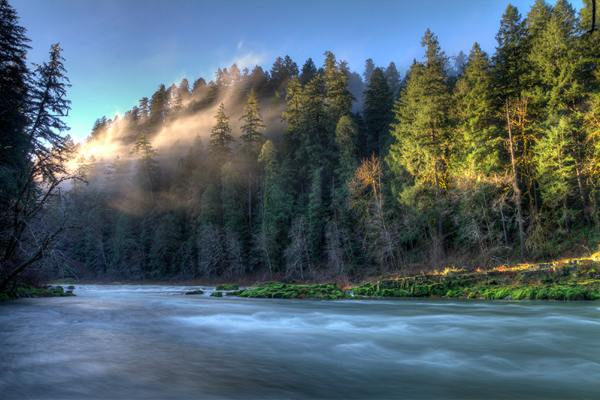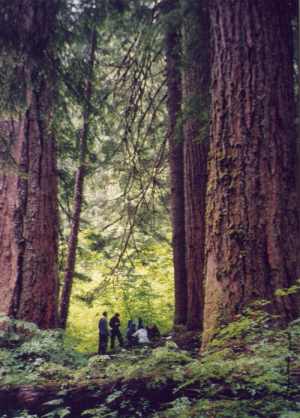
Earlier this year, I had the pleasure of watching from the back of the room as my co-worker, Chandra LeGue, introduced Oregon’s Ancient Forests – A Hiking Guide at a book launch in Portland. The guidebook was a labor of love for Chandra and the first foray into book publishing for Oregon Wild in 15 years. We’re all really excited that it is now out in the world.

Part of why we are so thrilled to share Oregon’s Ancient Forests with readers is to tell the story of our efforts to protect our states old-growth forests and introduce a whole new generation of Oregonians to the fight to save the places that define our state. And Chandra had a heck of a story to tell at the book launch.
Just weeks onto the job at Oregon Wild almost 20 years ago and not too far removed from the decidedly less ancient forest-covered Upper Midwest, Chandra was exploring one of Oregon’s truly remarkable cathedral forests in the Opal Creek Wilderness. When her group stopped for lunch beneath towering Douglas fir and western red cedar, she scrambled up a downed log to snap a photo from a distance. As she placed her hand against the trunk of a nearby tree to steady herself, she felt something that didn’t belong in a forest.
It was a timber sale marker. Twenty years later, when you hear Chandra describe this moment, you can tell that it still hits her like a gut punch – this place was nearly cut to the ground.
Of course, Oregon Wild and allies didn’t let that happen. We fought to halt timber sales, people rallied in the forest and the streets, and ultimately we lobbied to have Opal Creek forever protected as Wilderness in 1996.
I have my own story from early in my tenure at Oregon Wild, hiking in the awe-inspiring native forests at Big Bottom near the Clackamas River. There, I saw the spray paint and timber sale markers that promised the chainsaws would soon come for these giants. But, there too, Oregon Wild stood firm. What was once slated for clearcutting is now forever protected.
I urge you to keep these stories in mind as you read about the 10 Most Endangered Places in Oregon. It’s a scary list. But our history should give you hope. For almost five decades, Oregon Wild has been turning impossible threats into improbable victories for public lands, wildlife, and free-flowing rivers. And we can do it again (and again) with your help. Somewhere on this list is the next place that we’ll pass off to future generations as a natural legacy to be proud of.

